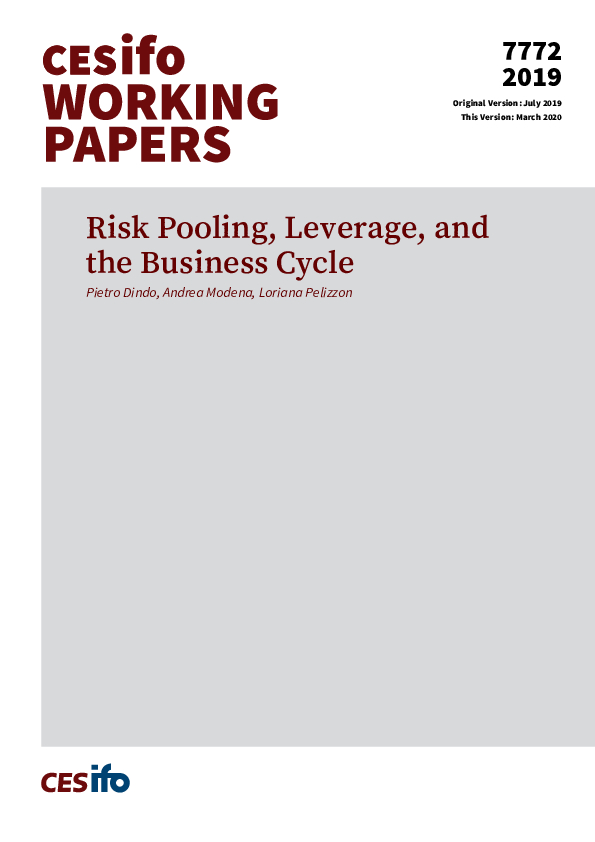Risk Pooling, Leverage, and the Business Cycle
CESifo, Munich, 2019
CESifo Working Paper No. 7772

This paper studies the impact of financial sector size and leverage on the business cycle and risk-free rates dynamics. We develop a general equilibrium model of a productive economy where financial intermediaries provide costly risk mitigation to households by pooling the idiosyncratic risks of their investment activities. In contrast to previous studies, we show that intermediaries not only amplify the variations of relative wealth between sectors, but may also mitigate business cycle fluctuations, while providing households with a risk-free asset whose real return is pro-cyclical and possibly negative. Households benefit the most when the financial sector is neither too small, thus avoiding high consumption fluctuations and costly risk mitigation, nor too big, so that fewer resources are lost after intermediation costs.
Fiscal Policy, Macroeconomics and Growth